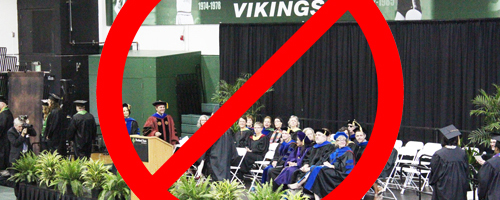Foxy Knoxy. A doe-eyed killer, wrapped up in a veil of stoicism. To most of Europe, she’s a persona non grata. Incarcerated in 2007 for the murder of her roommate, Meredith Kercher, and convicted in 2009, “Foxy Knoxy’s” story has captured the attention of much of the world.
A journalistic responsibility
Foxy Knoxy. A doe-eyed killer, wrapped up in a veil of stoicism. To most of Europe, she’s a persona non grata. Incarcerated in 2007 for the murder of her roommate, Meredith Kercher, and convicted in 2009, “Foxy Knoxy’s” story has captured the attention of much of the world.
But as it turns out, the story has been determined to be no more than a media frenzy focused in on the wrong person. Amanda Knox, the Seattle native convicted of Kercher’s murder while the pair was studying abroad in Italy, was recently acquitted of the crime in an appeal based in the DNA evidence used originally to convict her. She returned to America Tuesday.
The story of Amanda Knox is not so much based in evidence. Rather, her story is really one of the irresponsibility of the media, both in Europe and America.
From the very beginning, she was painted by all forms of media in certain lights. In Italy, she was shaped into a witch, feeding off the cultural fears regarding forms of magic. In England, Kercher’s home country, she was deemed “Foxy Knoxy” by the media, who looped a clip of her kissing her then-boyfriend while the police investigated. They pushed the image of her as a seductress who had convinced her boyfriend to join her in a sexually charged murder.
In America, Knox’s family worked with the media to paint a picture of her as a hardworking, good-hearted, all-American girl who had happened into a terrible situation. They did everything they could to make Knox seem like a falsely accused innocent girl. They made pleas to bring her home on every channel they could, highlighting her plight for everyone to see.
The differences in how the media presented her show exactly how the media influences public opinion. In England, there was no doubt that she was guilty. The Italian people viewed her as the most likely party to be guilty. Americans saw her as unquestionably innocent—a victim of an unfair justice system.
Whether she murdered Kercher or not (according to DNA analysis, she did not), Knox’s trial was biased from the very start. A biased trial is in no way positive for justice.
Knox’s case is an example of bias from both sides. It is likely that much of Europe will never believe that she is innocent, just as it is likely that much of America will never believe that she is guilty. A fair trial would never have been possible for her, and it is entirely the fault of the media.
Journalism should be held responsible for the outcome of trials such as these, regardless of whether the outcome is positive or negative. More than anything, the media is responsible for helping shape people’s opinions. In a situation such as this, people must be swayed only by the evidence and not by the perceptions painted of a situation by what they see on the news. As such, it is irresponsible to paint someone as a villain or a saint when the facts aren’t all in.
Think back to the Casey Anthony trial—from the start, the public had decided she was guilty. When she was declared not guilty, the American people were outraged. Calls to throw out the verdict on this “baby killer” filled the airwaves. Regardless of whether she did murder her daughter, she will always face persecution and accusations from those who know the case, thanks to the portrayal of her the media presented.
It is the responsibility of journalists to stay unbiased. This is an art lost now to much of the mainstream media. If this world is to be fair and just, the media must not work as a biased entity. It must work to inform rather than shape the opinions and perceptions of its targets audience.
The trial of Amanda Knox is not the first instance of media being a deciding factor in something that should be determined by other information, and it won’t be the last. But journalists should learn from it, lest it be repeated indefinitely.



